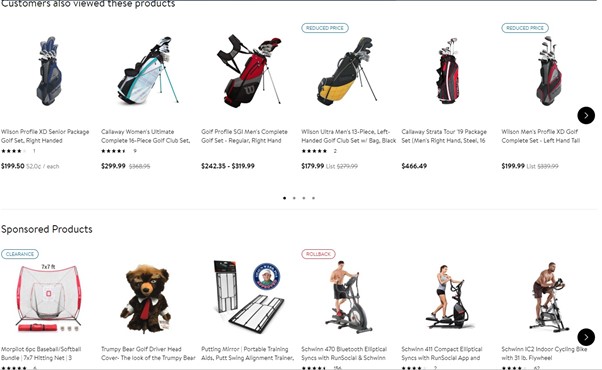Behavioural marketing isn't just being nice and polite in your campaigns. Please, sir, buy our product. Please and thank you. So very kind of you. In fact, people would probably find that off-putting, so probably best to avoid.

No, in fact behavioural marketing involves serving targeted ads or content based on a user's past actions and experiences, rather than just sending them a potted plant or opening the door for them.
The theory stands that this technique works because if ads are more relevant to the user, there's a higher chance that they'll respond to your messaging in a more positive manner.
This tends to be run by a lot of data, analysis, and technology running behind the scenes to provide up to date information on your customers.
User profiles are constructed using this data, which can include:
- Web analytics
- Cookies (for now)
- Browsing history
- Search history
- Social data
- Purchase history
- Login details
- IP addresses
- App data
When this is collected, it can be turned into actionable insights.
The question is: with the increasing awareness, and dislike, of highly targeted material and the data it requires, will consumers continue to react positively to this form of marketing? Plus, what data will be used alongside stricter data laws, such as GDPR? We'll jump into this later in the article.
Right now, we need to ask:
What makes behavioural marketing so effective?
In the past, with minimal data resources, marketers have used some less than ideal practises. This mainly involved consumers being bombarded with unrelated ads, emails, and other outreach which was easy to ignore.
Behavioural marketing is far more precise. in order to provide a personalised experience, this technique gathered data on consumer behaviour in order to segment and target audiences in accurate ways. This form of marketing focuses on individual patterns of engagement and behaviour in order to match intents, interests and needs, to specific groups of people.
So, rather than just using the 'spray and pray' approach, behavioural marketing uses the information listed above to build a definitive profile, and tailor messages accordingly.
This process tends to be split into three stages, being:
Phase one: Data collection and analysis
Phase two: Audience segmentation
Phase Three: Applying the data.
So, let's have a look into phase two: behavioural marketing, or audience, segmentation.
An important part of behavioural marketing is thinly segmenting audiences. Consumer segments might be determined differently depending on your organisation's marketing goals, and ideal marketing. But there are a few consistent, common, and effective ways that some companies split up markets:
- Geolocation. This can involve the continent, country, region, or even the building where the user is located. This can help with local targeting, with the weather even being considered.
- Retargeting and remarketing. This involves the customer's previously viewed pages and products, which are then shown again, wherever they are on the internet.
- Visit data. This information tells an analyst whether a user is new, or has visited before.
- Benefits sought. When a customer researches products or services, data on motivations and intent is gathered. The nuance comes in how much a customer values various aspects of an offering.
- Transactional data. The data from this involves when customers have made a purchase, are aware of your brand, and could be interested in purchasing another product. So, the data collected may be the number of purchases, average order value, product category, and time of purchase.
- Engagement level. It is always positive when a customer is engaging with your brand. This data informs a company on consumer perceptions and trust, as well as intent to purchase, based on how often a customer is engaging, and how rich those engagements are.
- Occasion. Data can even be pulled from the occasion or timing of a purchase, or instance of engagement. So, that might be holidays, or even weddings. So, marketers can target segments based on certain times of the day they are more likely to buy.
What is behavioural targeting?
Behavioural targeting, not dissimilar to behavioural marketing, targets website users based on previous behaviours, such as purchase history and search history.
This is aided by the use of user segmentation, which can then be utilised to create highly personalised ads for your clients.

The following example shows both the use of behavioural targeting and contextual targeting. The "customers also viewed" suggests behavioural targeting, having been influenced by customer behaviour on the site, whereas the "sponsored products" section is influenced by the page content and search results.
Will behavioural marketing stick around?
Now for the question you've all been waiting for.
For years now, brands have been using third-party cookies to track their customers, improve user experience, and collect data in order to target the right ads to the right people. They also allowed companies to see who their customers were outside the interaction with their brand.
But with Google's efforts to phase out the third-party cookie by 2022, this can no longer be relied on.
The thing is, personalisation is no longer an add-on, but a necessity. In fact, 66% of shoppers say that a poorly personalised experience would stop them from making a purchase.
This means marketers have to turn to different forms of data to provide this content, and to collect information on their clients. Alternatives like zero-party data allow for both accurate information, and a level of trust.
One of the main benefits of zero party data is that it is linked to customer engagement and interaction. Companies using zero party data can be assured that their customers want to hear from them, and will respond when they are targeted.

Zero party data is when a customer willingly and proactively shares information with a company. This might include product preferences, personal details and context, or how they want to be identified by the brand. It's all about asking, over inferring.
Forrester Research, who coined the term, describes it as:
"Zero-party data is that which a customer intentionally and proactively shares with a brand. It can include preference centre data, purchase intentions, personal context, and how the individual wants the brand to recognize [them]."
It's an equal exchange - zero party data is given freely, and in return the client gets their coveted personalised experience. In this way, it doesn't make sense to collect it for anonymous customers. Zero party data only makes sense for identified customers.
This form of data also tends to give companies a greater insight into customer needs, interests and intent, and explicitly rather than implied.
Consumers are becoming way more wary about the data collected about them, and how it's being used. Companies are being more cautious too. Legislation like the GDPR and CCPA are being enforced more strictly.
Recently, a lawsuit was brought against Oracle and Salesforce for their use of 3rd party tracking cookies which could end in fines in excess of €10B.
Google is currently only planning to phase out third-party cookies on its browsers. However, this means that first-party cookies, that track basic data about your own website's visitors, remain safe.
In their 2021 announcement, the internet company called first-party relationships "vital".
Plus, with innovations such as the AR cloud, VR, the metaverse, and the Internet of Things, marketers will receive information and data about customers based on willingly given information. By providing an engaging and well-crafted experience, customers will give out information freely in order to receive this in return.
Plus, the geographical and behavioural information provided by these technologies will be rich, accurate and abundant.
So, keeping this in mind, let's look at some examples of behavioural marketing that worked.
Intel
Knowing that the customer decision process is intense and long, Intel wanted to persuade IT decision makers to choose their company. Plus, they needed to track how an individual customer's purchase intent changed over time.
So, the company built a campaign to influence these individuals at every part of the journey. They collected contextual cookie level data, dynamic advertising data, onsite data, and third-party research data to do so.
Then, using metrics, it developed a real-time data analytics strategy to optimise campaigns.
The company then designed articles to correspond with specific points of the buyer's journey, and optimised ads according to performance and engagement. Then, it sent out the best-matched content for where the target was in the cycle, and through the most effective channels.
This led to the campaign achieving six times higher engagement rate for its retargeting campaign compared to the Google Display Network's average. Cost per action dropped by 48% when compared with the previous campaign and was nine times lower than the industry average.
Volkswagen
Volkswagen China aimed to understand the aspirations of customers, and identify potential clients. But they found the identification of a consumer's purchase journey to be complex.
As a result, the company developed analytics to model different consumer personas. This technique looked into recent behaviour on social sites, websites and on mobile, and created insights based on response history to emails. This allowed them to score their potential as a lead.
With this, the car company could segment its customer list into consumers who were ready to be contacted by sales, consumers who needed to be nurtured, and consumers who were just looking for brand information. They were then able to provide a service personalised to the segment.
The new technique led to a conversion rate which increased by 50%, alongside ROI increases and improved media efficiency.

